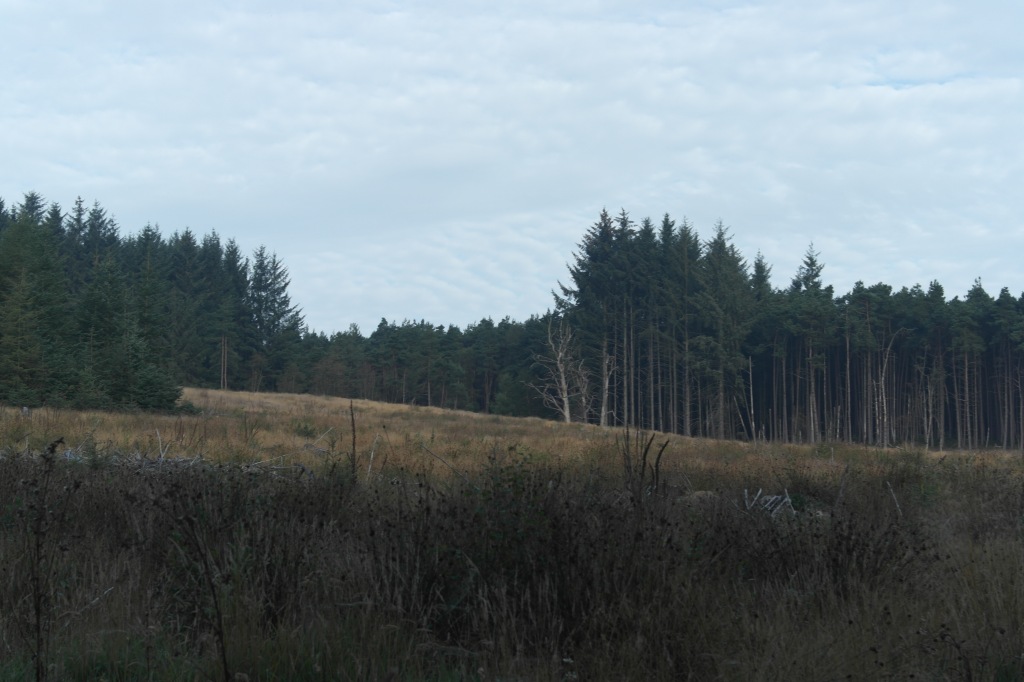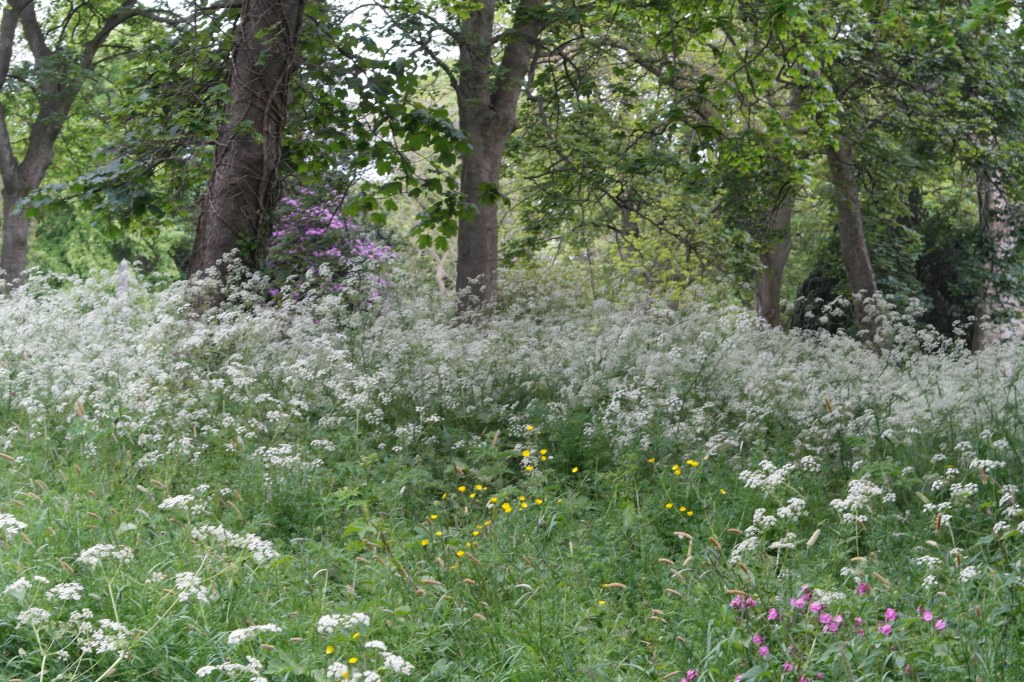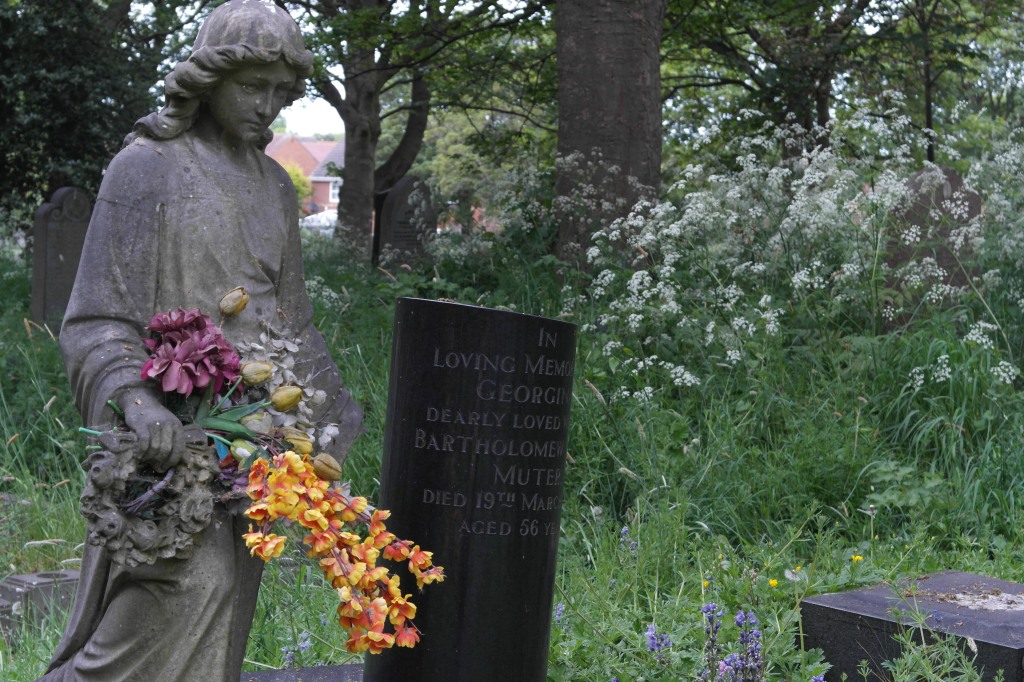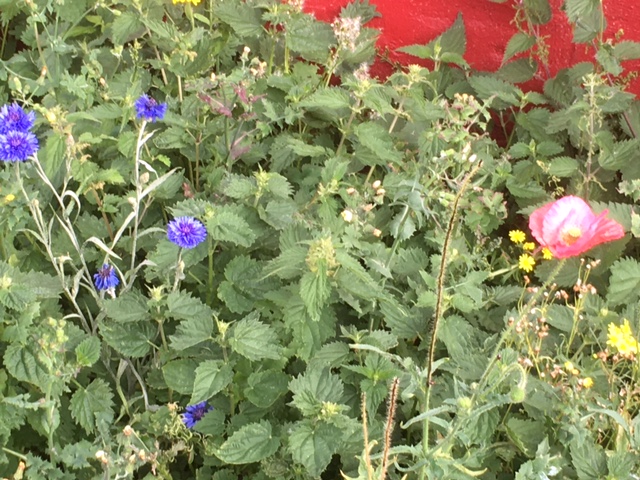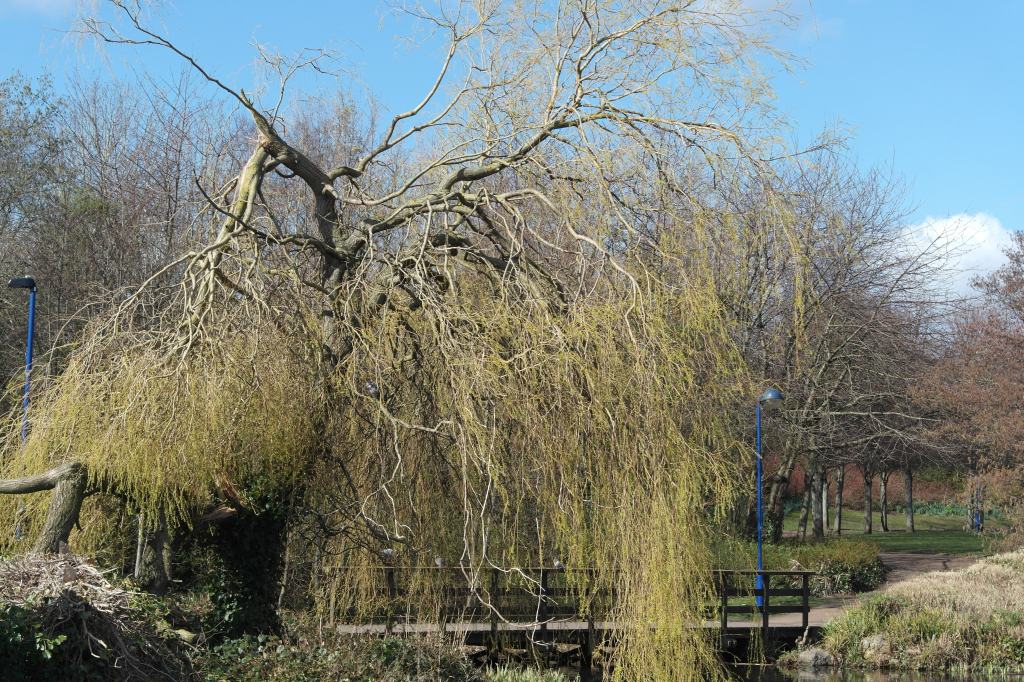
Early March and curlews forage in the stubbled wheat field. We follow the road round to the island, past meadows dried to straw. The horizon opens out into big, bold clouds. On the headland, someone has left flowers at Curry’s Point, where the murderer Michael Curry was hung in a gibbet in 1739 for murdering the landlord of a local inn. We struggle past, through the wind down to the causeway.

On rocks green with gut weed, a black backed gull stalks. She picks out a crab from a rock pool. A crow, dwarfed by her size, follows her every move, hoping for a morsel. The sea is streaks of blue and aqua, fraying to grey and white at the edges. Far out, there is a blue ship. Behind the lighthouse, the turbines rotate on the horizon.

The beach is strewn with patches of small pebbles, bladderwrack and stems of kelp. A pied wagtail pecks among the seaweed. Gulls soar above the cliffs, revelling in the lift of the wind. A red container ship leaves Blyth port, sounding its horn to announce its passage. Winston plays with his ball for a while but then we walk up to the cliffs.

All is dry and bare on the cliff top. Spring is hardly noticeable here. There are two small patches of daffodils. Shrubs with fiery branches and lichen covered bark. A single wizened hawthorn is still laden with berries. Its companions in the hedgerows all bow inwards, grown in the direction of the wind. Just before we leave, a rainbow reaches out of the waves to embrace the lighthouse.

Later in the month, we walk high above the river. The sun is bright behind clouds and the light is exquisite: pale, soft and blurred. As the sun moves, it lights up the water like bouncing diamonds. The tide is in and the waves are rough. White spume fans over the piers and the deadly black midden rocks.
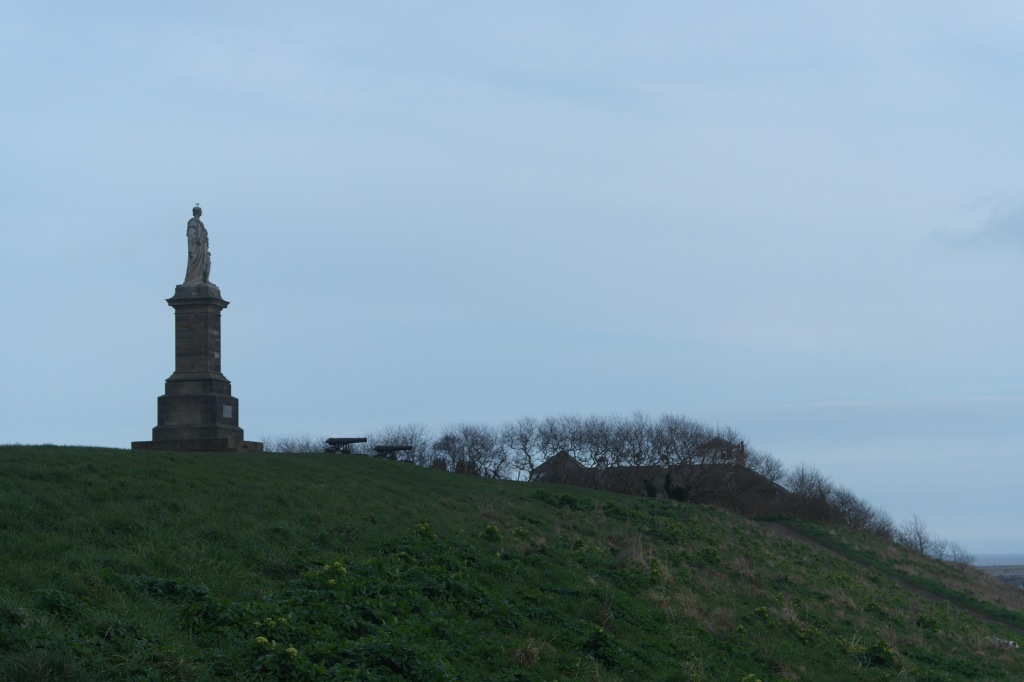
I walk Winston down a path lined with Alexanders, lime flowers against fresh green leaves. Smoke from a garden bonfire scents the path. The sound of the sea crescendos as we walk, until we pass under a sylvan arch and the mouth of the river is laid out before us. The lighthouse on the south pier is open to the elements, its top having been blown off in a storm last year and never found. Herd Groyne lighthouse glows crimson in the harbour. On the beach behind it, there appears to be a sand storm, waves of sand rolling like mist. To our left, Lord Collingwood gazes forever out to sea, canons poised beneath him, gull perched on his head.

Easter weekend. The equinox has just passed and tomorrow the clocks will be wound forward for spring. We join people down at the fish quay for the traditional Good Friday fish and chips. We are early and the queues still small, but they will get much longer as the day goes on. Spring is still settling into balance – sun and showers today, snow forecast for next week. The hedgerows are full of blackthorn blossom and I have seen a parakeet in the park, but there will be more storms before the season fully turns.









